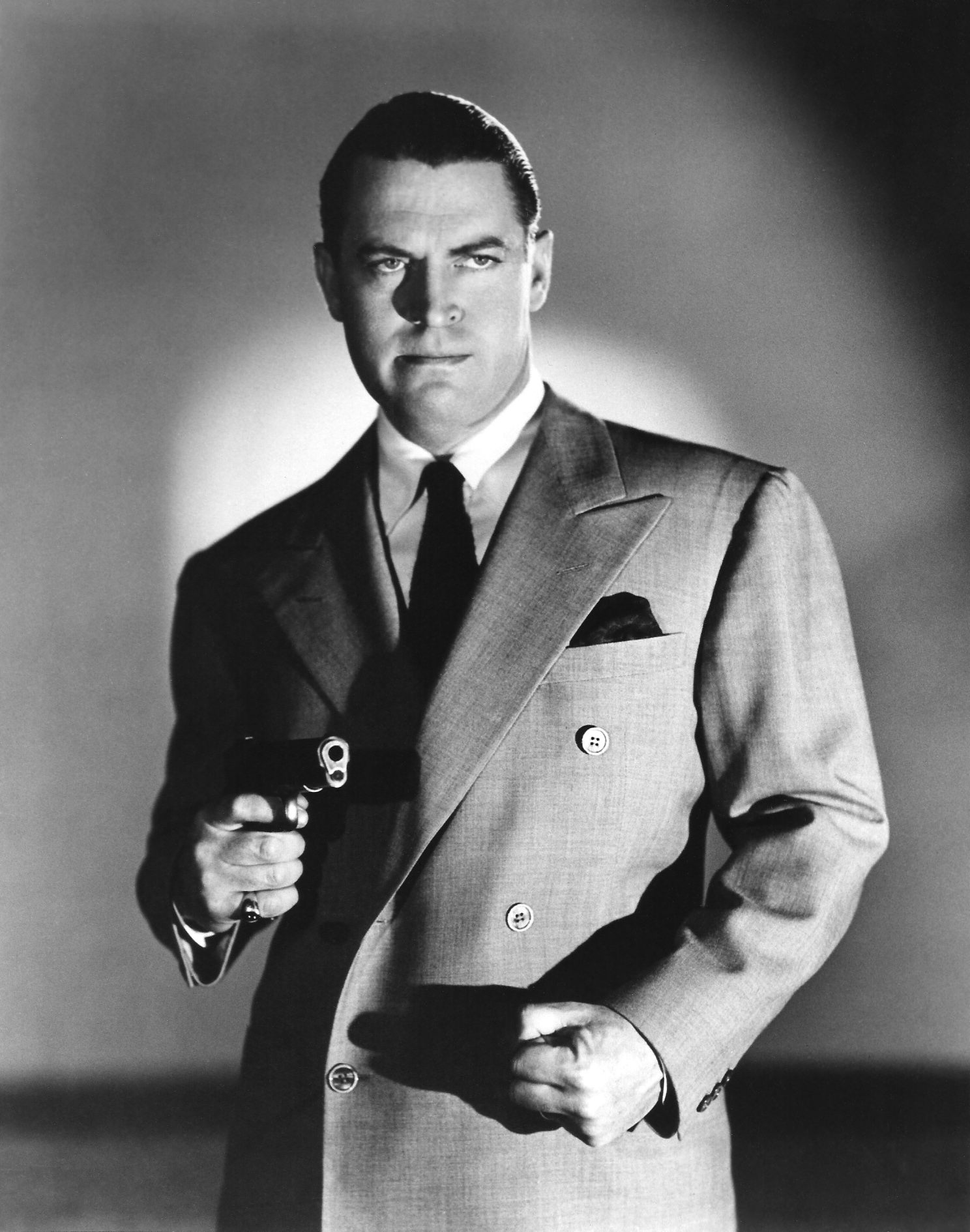Review: Meet Boston Blackie (1941)
Posted by Ivan G. Shreve, Jr. on Jan 14th 2014
Radio Spirits has just released a brand-new CD collection of broadcasts featuring Boston Blackie, a lighthearted detective drama based on the famed reformed safecracker-jewel thief introduced by author Jack Boyle in 1914. The program was heard on radio from 1944 to 1950, and although Richard Kollmar was the actor who played the role of Horatio “Boston Blackie” Black the longest, many people can’t help but associate the amateur sleuth with Chester Morris. Granted, Morris may have been the first thespian to play Blackie on radio (in a 1944 NBC series that served as the summer replacement for Amos ‘n’ Andy), but the reason why he’s become so identified with the part is that he starred in a series of B-movies released by Columbia Pictures between 1941 and 1949—fourteen programmers in all.
Meet Boston Blackie (1941) appropriately kicked off the popular movie franchise. The film opens as Blackie (Morris) and his sidekick The Runt (Charles Wagenheim) arrive in New York via cruise ship, with Blackie coming to the aid of a young woman identified as Marilyn Howard (Constance Worth), who’s accosted by the sinister Martin Vestrick (Nestor Paiva). Before he exits the gangplank at the behest of his nemesis on the police force, Inspector James Faraday (Richard Lane), Blackie returns to his stateroom to find a dead body on the premises…none other than Vestrick himself. Blackie temporarily eludes Faraday’s clutches and winds up at Coney Island, where he manages to catch up with Ms. Howard and extract a confession that she’s responsible for croaking Vestrick. Unfortunately for our hero, Marilyn soon joins her victim in the Great Beyond when she’s dispatched by two goons (Jack O’Malley, George Magrill) in the employ of a “mechanical man” (James Seay).
During the movie’s sixty-one minutes, Blackie finds himself drawn into a web of wartime spy intrigue…and a murder mystery that he’ll need to solve since his pal Faraday has fingered him as the guilty party. He’s helped by The Runt, of course, and by an innocent bystander named Cecilia Bradley (Rochelle Hudson) who’s not exactly certain what’s going on—she remarks to Blackie that the proceedings play “like the second installment of a serial”—but is soon so caught up in the spirit of Blackie’s adventure that she’s game enough to tag along.

Despite its B-programmer origins, Meet Boston Blackie remains not only an entertaining comedy-mystery, but a second feature with production values (including striking cinematography by Franz Planer) capable of fooling an audience into thinking it was an “A” picture. At the helm of Meet was director Robert Florey, whose past work included Murders in the Rue Morgue (1932; with Bela Lugosi) and The Face Behind the Mask (1941; with Peter Lorre). And the casting Chester Morris as Blackie was particularly inspired; Morris’ star was shining a little less brightly since his glory days of Alibi (1929—a film that garnered him an Academy Award nomination as Best Actor), The Divorcee (1930) and The Big House (1930)…but he was still a solid and dependable second lead in A-pictures (and a leading man in many a “B”s). In the words of film historian Leonard Maltin, Chet “brought to the role a delightful offhand manner and sense of humor that kept the films fresh even when the scripts weren’t.” The Blackie films cemented the actor’s popularity among moviegoers.
Rochelle Hudson is Morris’ leading lady in Meet Boston Blackie—she captivated audiences in the 1930s in a number of Will Rogers vehicles (notably Doctor Bull and Life Begins at Forty). By 1941, she was starting to shift toward character roles (you might know her as Natalie Wood’s mother in Rebel without a Cause). Hudson acquits herself nicely as the reluctant woman who is skeptical of Blackie at first but eventually ends up in his corner. Richard Lane plays Inspector Faraday. (In subsequent outings, his name would be spelled with an extra ‘R’ – Farraday – and his first name tended to shift from film to film between John and William R.) What rarely changed, however, was that (although he had a grudging respect for Blackie), he would have given his eyeteeth to lock B.B. behind bars permanently.
Meet Boston Blackie was the sole venture for character great Charles Wagenheim as The Runt. In subsequent Blackie films, George E. Stone inherited the role and played it beautifully in all but the final Blackie saga, Boston Blackie’s Chinese Venture (1949—where Sid Tomack is The Runt). In a bit role as a dimwitted flatfoot who mistakes Faraday for Blackie is Walter Sande. In the second Blackie film, Confessions of Boston Blackie (1941), Sande gets a promotion to plainclothes detective and is referred to as “Matthews” (though, alas, his rise in the ranks does not make him any smarter). Walter would play Detective Matthews in five Blackie films in total, his last being The Chance of a Lifetime in 1943.

Next month: Confessions of Boston Blackie (1941) will be in the spotlight—featuring direction from a promising filmmaker who would later be at the helm of movies like Crossfire and The Caine Mutiny…and the female half of “America’s favorite young couple”…

